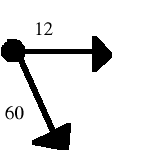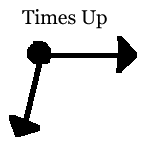The Friendly Fire Room Presents
Listen And See
Thank you Wanda Barlow for this great idea!
Pronouns Metaphors Errors Part 29
Pronouns Metaphors Errors Pt 29
Pronouns, Metaphors, and Errors
Message
May 31, 2015
Part 29
Scriptures
Hebrews 9.12
Hebrews 9.14
1 Peter 1.2, 18-19
1 John 1.7
Rev. 1.5
Rev 5.9-10
NKJ Hebrews 9:14
how much more shall the blood of Christ,
who through the eternal Spirit offered Himself
without spot to God, cleanse your conscience
from dead works to serve the living God?
We will take another look at Hebrews 9.14,
while taking hold of God’s promise to make us
complete in every good work by the power of His
Holy Spirit working in us what is well pleasing
in His sight through Jesus Christ, that we may not
be conformed to this world, but be transformed
by the renewing of our mind, that we may prove
what is that good and acceptable and perfect will
of God.
Romans 12:2, Hebrews 13:21
Hebrews 9:14
how much more than the blood of animals the blood of Christ, who by means of the eternal Spirit offered Himself without spot( faultless( sinless)) to God, will (future tense) cleanse your conscience from dead works, in order to get into serving the living God?
Hebrews 9:14
how much more than the blood of animals
the blood of Christ,
who by means of the eternal Spirit
offered Himself without spot( faultless( sinless))
to God, will (future tense) cleanse your
conscience from dead works, in order to get
into serving the living God?
Hebrews 9:14
how much more than the blood of animals
the blood of Christ,
who by means of the eternal Spirit
offered Himself without spot( faultless( sinless))
to God, will (future tense) cleanse your
conscience from dead works, in order to get
into serving the living God?
Hebrews 9:14
how much more than the blood of animals
the blood of Christ,
who by means of the eternal Spirit
offered Himself without spot( faultless( sinless))
to God, will (future tense) cleanse your
conscience from dead works, in order to get
into serving the living God?
You may not have noticed this before…
but look closely. Although the question is certainly rhetorical, it does bring up the fact that we do evaluate quality things by means of quantity evaluation; and we make value comparisons on the basis of our understanding of those differences.
In this instance of Scripture, we are being prompted by the Holy Spirit to think about the magnitude of the quality value of Christ’s blood atonement compared with the magnitude of the quality value of animal blood atonement.
But, it does not stop there...
The value we are being asked to evaluate is
intended also to instruct us and lead us to discover
the superiority of Christ’s blood atonement in
terms of its present ability to cleanse our
conscience, in order to overcome the negative
forces that work upon our conscience from time
to time, resulting from the trash left there from
dead works, as our sense of guilt acts
counter-productively to drag us down, with the
result of stopping us from even beginning to
serve the living God?
Implications:
We begin to catch a glimpse of an additional sense that is taking us beyond the notion of the magnitude of the value of the redemptive quality of Christ’s blood compared with that of the sacrificial blood of animals, to words which are intended to indicate “direction” as well as“magnitude”.
Explanation:
Just as the quantity a physical force can be represented schematically to demonstrate its characteristics of magnitude and direction, so also the quality of a non-physical force can be represented schematically in order to demonstrate its characteristics of magnitude and direction.
Explanation:
An understanding of the magnitude of something tells us how great of a force is at work, while knowing the direction of the force tells us where the force is being applied.
Explanation:
Forces can cause motion;
Alternatively, forces can act to prevent motion.
Mary mentioned in last
Friday’s class that the
Scriptures consistently use two separate numbers to
represent fullness or completeness with regard
to the two ideas of Quantity and Quality.
The number for fullness of Quantity is 10.
10 The number for fullness of
Quality is 7.
Quantity
Fullness is the same as
completeness.
7
Quality When something is said to
be filled, it means that it is
complete in its purpose as
a vessel or container.
The number for fullness of Quantity is 10.
10
![]()
Quantity
The number for fullness of Quality is 7.
7
![]()
Quality
If we wanted to represent these two ideas more concretely, we might draw a pictographic using line lengths corresponding to their respective numbers.
Magnitude
10
![]()
Quantity
7
![]()
Quality
This sort of physical
representation of two
different kinds of ideas
gives us a way to compare the relative Magnitude of
either idea…
quantity to quantity,
quality to quality.
Magnitude
10
![]()
Quantity
7
![]()
Quality
For example, the number for Christ, the number of days in a week, is presented in terms of a relative Quality (not Quantity) of 7. On the other hand, the number of relative Quality for man is 6, so we get the idea. Think about this for a moment.
Magnitude
10
![]()
Quantity
7
![]()
Quality
Q. Why do we quantify anything?
A. In order to assign a measure of relative value
to things, so that comparisons might be
made.
Q. Why should we want to make quantitative comparisons of anything?
A. In order to evaluate
things in terms of their
relative value, so that we
can sort things out, that we
might bring order to our
lives.
God likes order.
There can’t be such an idea of “weighty matters” until some kind of evaluation process has taken place.
Magnitude
10
![]()
Quantity
7
![]()
Quality
Let’s take a look at the Quantity part of things. Think about this. The biblical Quantity of completeness is 10. Should it surprise us that we have 10 fingers and 10 toes? Or that our numbering system is based on units of 10?
Now I want to make a transition from thinking about magnitude to thinking about direction. Forces can set objects into motion; Alternatively, forces can prevent objects from being set into motion.
Q. So how is a given magnitude transformed into a practical and useful force?
A. By giving a direction to the magnitude of a quality or to a quantity; namely a beginning point and an end point.
Magnitude and Direction
10
![]() Magnitude becomes
transformed into a Force
whenever we think of its
Quantity representation as having a
beginning point and an
ending point; in other words, in terms of having Direction.
Magnitude becomes
transformed into a Force
whenever we think of its
Quantity representation as having a
beginning point and an
ending point; in other words, in terms of having Direction.
7
![]()
Quality
Magnitude and Direction
10
![]()
Quanity
7
![]() What's this?
What's this?
Quality ![]()
Magnitude and Direction
10
![]()
Quanity
7
![]()
Quality
What's this?

What's this?



Implications:
The analogy is something like this:
just as the purpose of physical forces often have usefulness when they contribute in some way to the production of meaningful results, as work;
so also the magnitude of the value of Christ’s blood is intended by God to produce meaningful results, work that has direction in terms of pointing toward the completion of some specific goal or purpose.
Hebrews 9:14
how much more than the blood of animals the blood of Christ,who by means of the eternal Spirit offered Himself without spot( faultless( sinless)) to God, will (future tense) cleanse your conscience from dead works, in order to get into serving the living God?
Implications:
This text tells us that the blood of Christ, will cleanse your conscience from dead works, in order to get you into serving the living God, with living works.
Implications:
God’s forces are at work in you by the means made possible by Christ, and the work of His Holy Spirit. These are purposeful forces at work and they are intended to overcome the counter-forces of darkness which are also constantly at work trying to keep you from getting into the actions involved in serving the living God.
Implications:
We are not talking about the dark forces of the
Devil keeping you back. These are the real counter-forces at work in us as
a consequence of our own sin.
Next week I hope to answer the question…
So, what does it mean,“to get into serving the living God”?
Many will be surprised on the Day of Judgment when they discover
that it was just as the Word of God says;
only the righteousness of Christ is able to save you.All men are sinners and no one can save himself.
God is just, so He must punish sin;
but He is also merciful, moreover gracious,
and offers His Son as the perfect sacrifice
in order to purchase a place for you in heaven,
which He offers to you as the free gift of eternal life.
Jesus is God Incarnate,
In order to pay the debt of our sins, He came from Heaven, having been sent by the Father,
where He lived a life of perfect obedience to the Father
even unto the shameful death upon the cross
in order to pay the debt of your sins.This gift must be received by faith,
believing that Jesus’ perfect life and Cross Work
was His complete and necessary Atonement
for your sins, in your behalf.
Faith is a gift that comes by the Power of God the Holy Spirit working in a person’s innermost being.
Only the power of God can open your heart to the willingness to have the void within it filled
with the presence of Christ by His Spirit.The Holy Spirit has the authority and power to quicken your dead spirit, to make it come to life.
Only the life of His Spirit’s quickening of your heart will allow the Gospel message of salvation to even make sense to you, to truly “hear” the message and give you the ability,
as the Holy Spirit bears witness to Jesus,
to recognize your need for forgiveness and restoration, and gain the desire of your heart to be favorably inclined to want to receive Christ as your personal Lord and Savior.If you have not done so before this moment,
ask Jesus to forgive you your sins,
tell Him you’ve stop trying to be your own savior,
and ask Him to come into your life right now,
and to give you eternal life. Then, in faith believing,
thank Him for the gift that He is giving you,
the one He paid for in full in your place,
in Jesus’ name,
AMEN
Copyright May, 2015
Rev. Jim Craig
All Rights Reserved
Bibliography
Agnes, Michael and Charlton Laird (eds.). Webster’s New World Dictionary and Thesaurus. New York, NY: Macmillan, 1996.
Aland, Kurt, Matthew Black, Carlo M. Martini, Bruce M. Metzger, and Allen Wikgren (eds.). The Greek New Testament, 4th rev. ed. Germany: Biblica-Druck, 1994.
Benner, Jeff A. The Ancient Hebrew Lexicon of the Bible. College Station, Texas: Virtualbookworm.com Publishing Inc., 2005
Bullinger, E. W. Figures of Speech Used in the Bible; Explained an Illustrated. Grand Rapids, Michigan: Baker Book House, 2007.
Chapman, Benjamin. Greek New Testament Insert. Grand Rapids, Michigan: Baker Book House, 1977.
Dana, H. E., and Julius R. Mantey. A Manual of the New Testament. Canada: The Macmillan Company, 1957.
Louw, Johannes P. and Eugene A. Nida. Greek-English Lexicon of the New Testament Based on Semantic Domains. New York, NY: United Bible Societies, 1989.
The ESV Study Bible. Wheaton, Illinois: Crossway, 2011.
Metzger, Bruce M. Lexical Aids for Students of New Testament Greek. Princeton, New Jersey, 1977.
Wikipedia contributors. "Xenophon." Wikipedia, The Free Encyclopedia. Wikipedia, The Free Encyclopedia, 15 Aug. 2014. Web. 19 Aug. 2014.
Wuest, Kenneth S. The New Testament; An Expanded Translation. Grand Rapids, Michigan, 1992.
Wuest, Kenneth S. (Revised, Donald L. Wise). The Practical Use of the Greek New Testament, rev. ed. Chicago, Il: Moody Press, 1982.
Walsh, J. Martyn and Anna Kathleen Walsh. Plain English Handbook: A Complete Guide to Good English, 7th rev. ed. Cincinnati, Ohio: McCormick-Mathers PublishingCompany,1977.